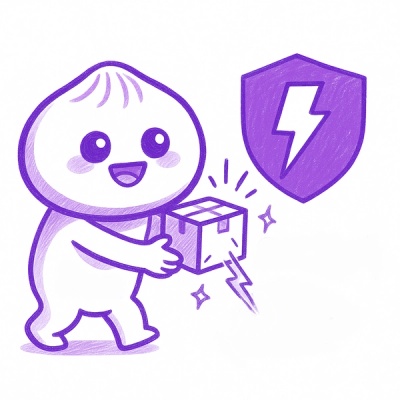
Research
/Security News
Weaponizing Discord for Command and Control Across npm, PyPI, and RubyGems.org
Socket researchers uncover how threat actors weaponize Discord across the npm, PyPI, and RubyGems ecosystems to exfiltrate sensitive data.
@sensebox/sketch-templater
Advanced tools

Arduino sketch templates used by the openSenseMap-API. The sketch-templater creates a Arduino Sketch (.ino) for the Arduino IDE based on the selected options and sensors during the registration process on openSenseMap.
The version of templates should always match the corresponding Version of the Board Support Package
See CHANGELOG.md
To create a new version, use npm version.
CHANGELOG.md. Make sure there are no uncommited changes in the worktree.npm version [major | minor | patch] -m "[v%s] Your commit message"beta release include the word beta in the new version)git push --tags origin mainnpm publishInstall via npm install --save @sensebox/sketch-templater or yarn add @sensebox/sketch-templater
const Sketcher = require('@sensebox/sketch-templater');
const mySketcher = new Sketcher('<your api post domain>');
// generate Sketch
const mySketch = mySketcher.generateSketch(box);
const mySketchBase64 = mySketcher.generateSketch(box, { encoding: 'base64' });
In order to fill in the correct ingress domain, you have to specify a valid hostname. Do not specify a protocol (http or https)!
You can do this either in code when calling the new Sketcher('your domain here') or through external configuration.
If your project is using lorenwest/node-config, you can specify the ingress domain in your config file of your project like this:
{
... your other config
"sketch-templater": {
"ingress_domain": "ingress.example.com"
}
}
To add new templates, just create a new .tpl file in the templates directory. A template consists of two parts. The first line contains a JSON object for configuration. The second line until the end is used as the template text.
Specify a single model:
{ "model": "homeEthernet" }
Specify multiple models:
{ "models": ["homeWifi", "homeWifiFeinstaub"] }
The templater uses special transformers to process the templates. The transformers are applied through searching for @@SUB_TEMPLATE_KEY@@ occurrences in the template files. Each replacement starts and ends with a double @. To specify a transformer, append a pipe (|) and the transformer name. When no transformer is specified, it just returns the input variable. For adding new template transformers, see Adding Transformers.
As of writing this, the following replacements can be made:
| Template text | Replacement |
|---|---|
@@SENSEBOX_ID@@ | the senseBox ID |
@@SENSEBOX_NAME@@ | the senseBox Name |
@@SENSOR_IDS@@ | sensor IDs |
@@NUM_SENSORS@@ | the number of sensors |
@@INGRESS_DOMAIN@@ | the domain of your ingress server |
@@SERIAL_PORT@@ | Serial port for connected SDS011 (only Feinstaub models) |
@@SSID@@ | your WiFi SSID (only homeV2Wifi models) |
@@PASSWORD@@ | your WiFi Password (only homeV2Wifi models) |
@@ACCESS_TOKEN@@ | the access_token of wifi / ethernet boxes |
Additionally, the following transformers are implemented:
| Transformer name | Description |
|---|---|
as-is | Do nothing. |
toDefine | Transform an array of sensors to multiple #define statements. |
toProgmem | Transform an array of sensors to multiple const char xxSENSOR_ID[] PROGMEM = "<id>"; statements. |
digitalPortToPortNumber | Transform a digital port (A, B or C) to a port number. You can add a offset parameter. |
toDefineDisplay | "true" to implement the display to the home sketch. |
toDefineEnableDebug | "true" to enable additional debug messages in the serial monitor |
In order to add a new transformer, just add a function in src/transformers.js to the module.exports. The function should return a string.
Add your additional replacements in src/index.js in the method _cloneBox to the second parameter of the Object.assign call.
FAQs
nodejs library to create senseBox Arduino Sketches
We found that @sensebox/sketch-templater demonstrated a healthy version release cadence and project activity because the last version was released less than a year ago. It has 5 open source maintainers collaborating on the project.
Did you know?

Socket for GitHub automatically highlights issues in each pull request and monitors the health of all your open source dependencies. Discover the contents of your packages and block harmful activity before you install or update your dependencies.

Research
/Security News
Socket researchers uncover how threat actors weaponize Discord across the npm, PyPI, and RubyGems ecosystems to exfiltrate sensitive data.

Security News
Socket now integrates with Bun 1.3’s Security Scanner API to block risky packages at install time and enforce your organization’s policies in local dev and CI.

Research
The Socket Threat Research Team is tracking weekly intrusions into the npm registry that follow a repeatable adversarial playbook used by North Korean state-sponsored actors.